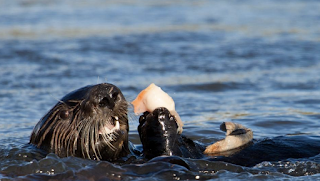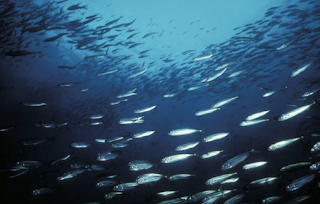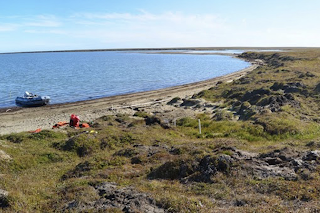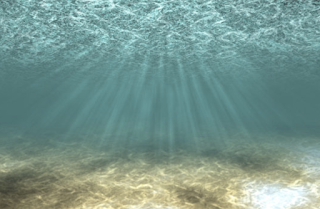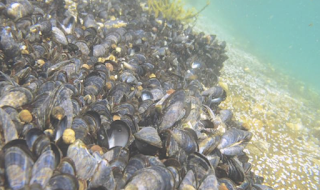COVID-19, plastic bag setback?, Smart economics: Seychelles, “blue bonds” support clean oceans, similar to COVID a pathogen jumps species: opossum to sea otter and more…
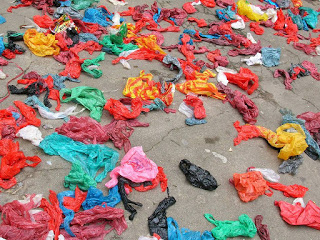 “They are Petri dishes for bacteria and carriers of harmful pathogens,” read one warning from a plastics industry group. They are “virus-laden.” The group’s target? The reusable shopping bags that countless Americans increasingly use instead of disposable plastic bags. The plastic bag industry, battered by a wave of bans nationwide, is using the coronavirus crisis to try to block laws prohibiting single-use plastic. “We simply don’t want millions of Americans bringing germ-filled reusable bags into retail establishments putting the public and workers at risk,” an industry campaign that goes by the name Bag the Ban warned on Tuesday, quoting a “Boston Herald” column outlining some of the group’s talking points.
“They are Petri dishes for bacteria and carriers of harmful pathogens,” read one warning from a plastics industry group. They are “virus-laden.” The group’s target? The reusable shopping bags that countless Americans increasingly use instead of disposable plastic bags. The plastic bag industry, battered by a wave of bans nationwide, is using the coronavirus crisis to try to block laws prohibiting single-use plastic. “We simply don’t want millions of Americans bringing germ-filled reusable bags into retail establishments putting the public and workers at risk,” an industry campaign that goes by the name Bag the Ban warned on Tuesday, quoting a “Boston Herald” column outlining some of the group’s talking points.
Read more in “The New York Times”
2. In Seychelles, blue bonds turn national debt into marine protection
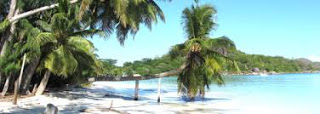 To manage its oceans better, Seychelles uses an unlikely resource to come up with the cash to do so: its national debt. As of 26 March 2020, the island nation has used an innovative financial model to turn 30 percent of its exclusive economic zone (EEZ) into marine protected areas. It’s not a new idea, says Angelique Pouponneau, the CEO of the Seychelles Conservation and Climate Adaptation Trust (SeyCCAT), which worked with international environmental NGO The Nature Conservancy (TNC) to develop the financial mechanism, known as blue bond. “Debt for nature swaps have been around for a very long time, but it’s been predominantly terrestrial-based [known as a green bond]. This one was different because for the first time it was ocean space–related.”
To manage its oceans better, Seychelles uses an unlikely resource to come up with the cash to do so: its national debt. As of 26 March 2020, the island nation has used an innovative financial model to turn 30 percent of its exclusive economic zone (EEZ) into marine protected areas. It’s not a new idea, says Angelique Pouponneau, the CEO of the Seychelles Conservation and Climate Adaptation Trust (SeyCCAT), which worked with international environmental NGO The Nature Conservancy (TNC) to develop the financial mechanism, known as blue bond. “Debt for nature swaps have been around for a very long time, but it’s been predominantly terrestrial-based [known as a green bond]. This one was different because for the first time it was ocean space–related.”
Read more from “Global Landscapes Forum”
A parasite known only to be hosted in North America by the Virginia opossum is infecting sea otters along the West Coast. A study from the University of California, Davis, elucidates the sometimes surprising and complex pathways infectious pathogens can move from land to sea to sea otter. For the study, published in the journal Scientific Reports, researchers tested sea otters ranging from Southern California to Alaska for the presence of Sarcocystis neurona, a parasite and important cause of death in sea otters. They were surprised to find several infected sea otters in the northern part of Vancouver Island in British Columbia, where Virginia opossums — also known as the North American opossum — are not known to live.
4. Large study reveals biodiversity shift
A global analysis of over 300 marine species spanning more than 100 years, shows that mammals, plankton, fish, plants and seabirds have been changing in abundance as our climate warms.
5. Great Barrier Reef: More bleaching
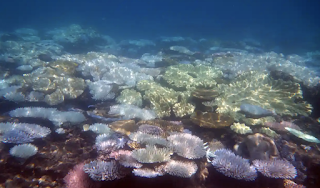 The government agency responsible for the Great Barrier Reef has confirmed the natural landmark has suffered a third mass coral bleaching episode in five years, describing the damage as “very widespread”. The Great Barrier Reef Marine Park Authority said the assessment was based on information from in-water and aerial observations and built on the best available science and technology to understand current conditions. Guardian Australia revealed on Wednesday that Prof Terry Hughes, director of the ARC Centre of Excellence for Coral Reef Studies at James Cook University, concluded the reef had experienced severe mass bleaching in the 2019-20 summer based on his findings from a nine-day aerial survey trip.
The government agency responsible for the Great Barrier Reef has confirmed the natural landmark has suffered a third mass coral bleaching episode in five years, describing the damage as “very widespread”. The Great Barrier Reef Marine Park Authority said the assessment was based on information from in-water and aerial observations and built on the best available science and technology to understand current conditions. Guardian Australia revealed on Wednesday that Prof Terry Hughes, director of the ARC Centre of Excellence for Coral Reef Studies at James Cook University, concluded the reef had experienced severe mass bleaching in the 2019-20 summer based on his findings from a nine-day aerial survey trip.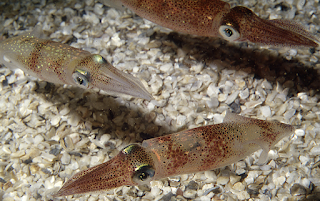 Revealing yet another super-power in the skillful squid, scientists have discovered that squid massively edit their own genetic instructions not only within the nucleus of their neurons but also within the axon — the long, slender neural projections that transmit electrical impulses to other neurons. This is the first time that edits to genetic information have been observed outside of the nucleus of an animal cell. The study, led by Isabel C. Vallecillo-Viejo and Joshua Rosenthal at the Marine Biological Laboratory (MBL), Woods Hole, is published this week in Nucleic Acids Research.
Revealing yet another super-power in the skillful squid, scientists have discovered that squid massively edit their own genetic instructions not only within the nucleus of their neurons but also within the axon — the long, slender neural projections that transmit electrical impulses to other neurons. This is the first time that edits to genetic information have been observed outside of the nucleus of an animal cell. The study, led by Isabel C. Vallecillo-Viejo and Joshua Rosenthal at the Marine Biological Laboratory (MBL), Woods Hole, is published this week in Nucleic Acids Research.
A previously unknown and significant source of carbon just discovered in the Arctic has scientists both marveling at a once overlooked contributor to local coastal ecosystems and concerned about what it may mean in an era of climate change. FSU researcher Robert Spencer co-authored a study that showed evidence of undetected concentrations and flows of dissolved organic matter entering Arctic coastal waters, coming from groundwater flows on top of frozen permafrost. This water moves from land to sea unseen, but researchers now believe it carries significant concentrations of carbon and other nutrients to Arctic coastal food webs.
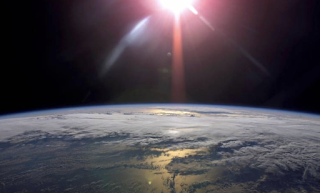 Stratospheric aerosol geoengineering is the idea that adding a layer of aerosol particles to the upper atmosphere can reduce climate changes caused by greenhouse gases such as carbon dioxide. Previous research shows that solar geoengineering could be achieved using commercially available aircraft technologies to deliver the particles at a cost of a few billion dollars per year and would reduce global average temperatures. However, the question remains whether this approach could reduce important climate hazards at a regional level. That is, could it reduce region-by-region changes in water availability or extreme temperatures?
Stratospheric aerosol geoengineering is the idea that adding a layer of aerosol particles to the upper atmosphere can reduce climate changes caused by greenhouse gases such as carbon dioxide. Previous research shows that solar geoengineering could be achieved using commercially available aircraft technologies to deliver the particles at a cost of a few billion dollars per year and would reduce global average temperatures. However, the question remains whether this approach could reduce important climate hazards at a regional level. That is, could it reduce region-by-region changes in water availability or extreme temperatures?
Editorial Comment: We have learned from COVID-19 that the balance between humans and nature is fragile and mismanagement can cause catastrophic ends.
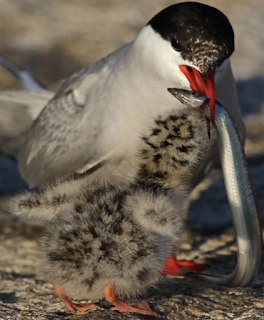 A slender little fish called the sand lance plays a big role as “a quintessential forage fish” for puffins, terns and other seabirds, humpback whales and other marine mammals, and even bigger fish such as Atlantic sturgeon, cod, and bluefin tuna in the Gulf of Maine and the northwest Atlantic Ocean. Their slender bodies make them very difficult to catch in marine survey nets so we have very little information on their abundance and distribution. We just can’t catch them reliably and efficiently enough to understand how big their populations are. A collaborative team of 24 coauthors led by the first author and marine ecologist Michelle Staudinger at the University of Massachusetts Amherst’s Northeast Climate Adaptation Science Center this week is calling for increased focus on the sand lance and their ecological role in the region’s “dynamic ecosystem,” which is facing increased pressure and risks from climate change, fishing and offshore wind energy development. Details are in the current issue of Fish and Fisheries.
A slender little fish called the sand lance plays a big role as “a quintessential forage fish” for puffins, terns and other seabirds, humpback whales and other marine mammals, and even bigger fish such as Atlantic sturgeon, cod, and bluefin tuna in the Gulf of Maine and the northwest Atlantic Ocean. Their slender bodies make them very difficult to catch in marine survey nets so we have very little information on their abundance and distribution. We just can’t catch them reliably and efficiently enough to understand how big their populations are. A collaborative team of 24 coauthors led by the first author and marine ecologist Michelle Staudinger at the University of Massachusetts Amherst’s Northeast Climate Adaptation Science Center this week is calling for increased focus on the sand lance and their ecological role in the region’s “dynamic ecosystem,” which is facing increased pressure and risks from climate change, fishing and offshore wind energy development. Details are in the current issue of Fish and Fisheries.
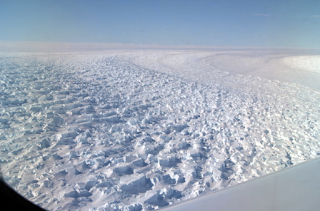 East Antarctica’s Denman Glacier has retreated 5 kilometers, nearly 3 miles, in the past 22 years, and researchers at the University of California, Irvine and NASA’s Jet Propulsion Laboratory are concerned that the shape of the ground surface beneath the ice sheet could make it even more susceptible to climate-driven collapse. If fully thawed, the ice in Denman would cause sea levels worldwide to rise about 1.5 meters, almost 5 feet. With this sobering fact in mind, the UCI and NASA JPL scientists have completed the most thorough examination yet of the glacier and surrounding area, uncovering alarming clues about its condition under further global warming.
East Antarctica’s Denman Glacier has retreated 5 kilometers, nearly 3 miles, in the past 22 years, and researchers at the University of California, Irvine and NASA’s Jet Propulsion Laboratory are concerned that the shape of the ground surface beneath the ice sheet could make it even more susceptible to climate-driven collapse. If fully thawed, the ice in Denman would cause sea levels worldwide to rise about 1.5 meters, almost 5 feet. With this sobering fact in mind, the UCI and NASA JPL scientists have completed the most thorough examination yet of the glacier and surrounding area, uncovering alarming clues about its condition under further global warming.
11. Pharma’s potential impact on water quality
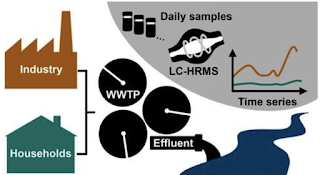 When people take medications, these drugs and their metabolites can be excreted and make their way to wastewater treatment plants. From there, the compounds can end up in waterways. Wastewater from pharmaceutical companies could start off with even larger amounts of these substances. Researchers report that a single pharmaceutical manufacturing facility could be influencing the water quality of one of Europe’s most important rivers.
When people take medications, these drugs and their metabolites can be excreted and make their way to wastewater treatment plants. From there, the compounds can end up in waterways. Wastewater from pharmaceutical companies could start off with even larger amounts of these substances. Researchers report that a single pharmaceutical manufacturing facility could be influencing the water quality of one of Europe’s most important rivers.
12. Christmas Island discovery – scientists rethink global distribution map
The world’s animal distribution map needs to be redrawn after researchers recently discovered the existence of “Australian” species on Christmas Island. According to the University of Queensland’s Jonathan Aitchison, the finding revises the long-held understanding of the location of one of biology and geography’s most significant barriers — known as the Wallace line. “The Wallace line — named after its discoverer Alfred Russel Wallace — delineates major biological division separating the species with Asian origins from those with Australasian ones,” Aitchison said in a statement. The research was published earlier this year in the journal Paleogeography, Paleoclimatology, Paleoecology.
A team led by UC Riverside geologists has discovered the first ancestor on the family tree that contains most familiar animals today, including humans. The tiny, wormlike creature, named Ikaria wariootia, is the earliest bilaterian, or organism with a front and back, two symmetrical sides, and openings at either end connected by a gut. The paper is published today in Proceedings of the National Academy of Sciences.
14. Microplastics found in four of five mollusk species
Read more from in study
15. Canada-U.S. Atlantic Ocean science mission canceled due to COVID-19
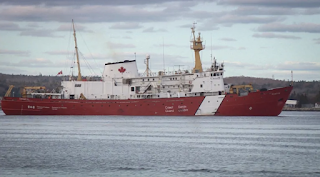 A joint Canadian-U.S. science mission to monitor ocean climate on the East Coast this spring has been scrubbed because of the coronavirus outbreak. Scientists from both countries were scheduled to leave the Woods Hole Oceanographic Institution in Massachusetts last Thursday for a three-week cruise before the trip was canceled. The mission would have measured a wide range of physical and biological conditions. “Given the precautions implemented to curb the spread of COVID-19, it was determined that the mission would not go forward,” Department of Fisheries and Oceans spokesperson Barre Campbell said in a statement to CBC News.
A joint Canadian-U.S. science mission to monitor ocean climate on the East Coast this spring has been scrubbed because of the coronavirus outbreak. Scientists from both countries were scheduled to leave the Woods Hole Oceanographic Institution in Massachusetts last Thursday for a three-week cruise before the trip was canceled. The mission would have measured a wide range of physical and biological conditions. “Given the precautions implemented to curb the spread of COVID-19, it was determined that the mission would not go forward,” Department of Fisheries and Oceans spokesperson Barre Campbell said in a statement to CBC News.
———————————————–

